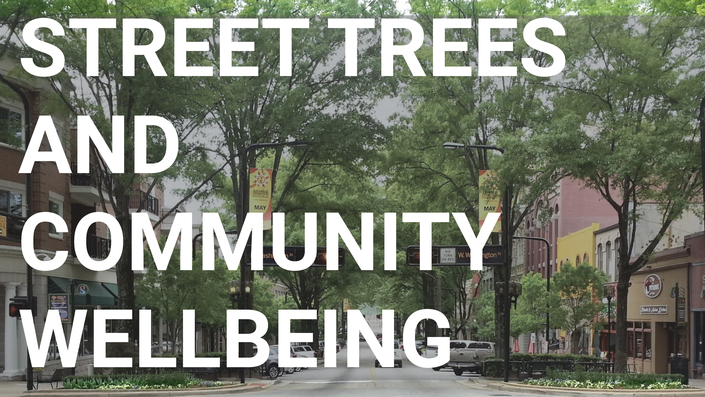
Street Trees and Community Wellbeing
Triple Bottom-Line Benefits, Tools, and Resources for Integrating Nature Into the Built Environment

Overview
This course will take an in-depth look at how to maximize the impact of street trees, and use street trees as a green infrastructure tool to create healthier, happier communities that are more resilient and prosperous. The course will been viewed through the lens of the Health Impact Assessment (HIA) process, looking at the Lawrence Green Streets program – a local initiative to increase urban tree canopy cover in the community of Lawrence, Massachusetts.
The original goal for the street tree planting project was to increase shade tree canopy cover in urban areas to reduce energy demand. In order to promote greater community support for the project, the HIA process was used to assess existing community health concerns and look at how street trees might have an impact on local health from an environmental, social, as well as economic perspective. This course will review the tools and techniques that were used to develop this HIA and teach viewers how they can use the results to promote increased tree canopy cover in their own communities.
Includes
- Unlimited access to Street Trees and Community Wellbeing
- Certificate of completion
Learning Objectives
- Understand the social, economic, and environmental benefits of street trees.
- Learn how health impact assessments can be used as a tool to quantify and assess the multiple benefits of green infrastructure elements such as street trees.
- Understand how green infrastructure elements like street trees can contribute/connect to a green infrastructure network in developed areas.
- Learn how triple bottom-line (TBL) tools such as i-Tree can be used to assess and manage green infrastructure elements such as street trees, as well as assist in educating the general public about the TBL benefits.
Continuing Education
This course is approved for 1 ASLA, GRP HSW CEU and pending approval for AIA
Your Instructor

Neil Angus is an Environmental Planner with Devens Enterprise Commission – the regulatory authority overseeing the redevelopment of the former Fort Devens Army Base located in central/eastern Massachusetts. Neil assists in the long-range and day to day planning and sustainable redevelopment operations for Devens and specializes in green building and green infrastructure planning and design. Neil holds a Professional Design Degree in Environmental Planning from the Nova Scotia College of Art and Design and is a Certified Environmental Planner with the American Institute of Certified Planners. Neil is also a Member of the Canadian Institute of Planners and is a US Green Building Council LEED Accredited Professional specializing in Neighborhood Development and Building Design and Construction.
